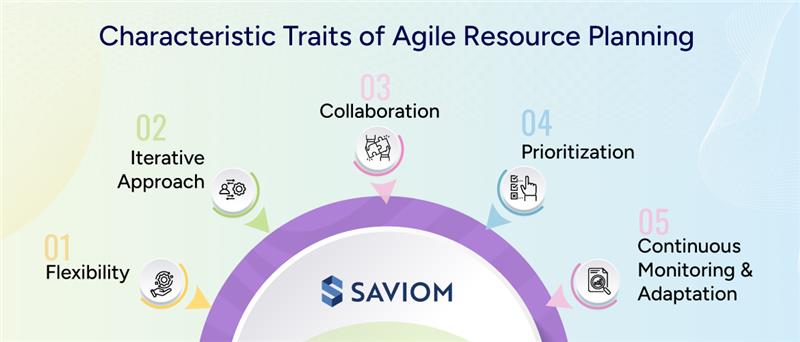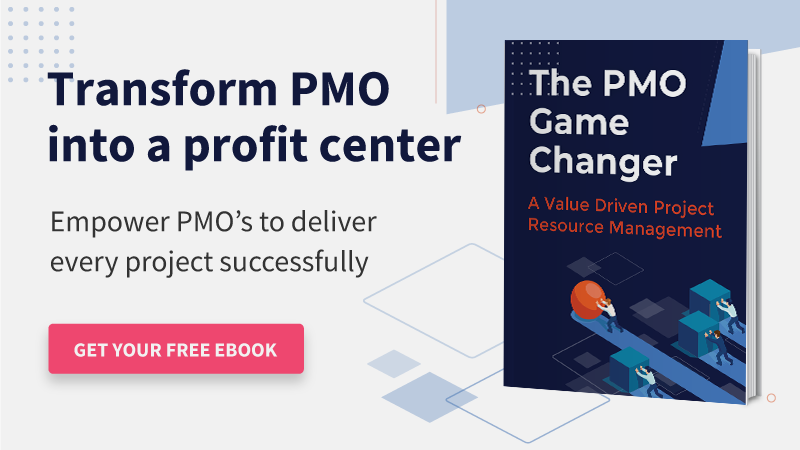In today’s dynamic business landscape, agile project management has become essential for organizations striving to meet evolving customer expectations, embrace new technologies, and stay competitive. Unlike traditional methodologies, agile prioritizes flexibility, collaboration, and iterative progress through short, focused work cycles known as sprints that enable teams to quickly adapt to changes and deliver value incrementally.
However, the success of agile projects depends on how effectively resources are managed across various sprints. Thus, through proper resource management, teams can ensure agile projects progress smoothly, meeting product backlog priorities and sprint goals within set timelines and budgets.
In this blog, we’ll explore how you can manage resources effectively within an agile framework to meet evolving demands and deliver high-quality results.
Let’s begin with the basics:
What is Agile Project Management?
Agile project management is an iterative and incremental approach to managing projects that emphasizes flexibility, collaboration, and continuous improvement. It focuses on delivering smaller, functional pieces of a project in short incremental cycles known as sprints.
During the sprint, cross-functional teams collaborate to accomplish sprint goals and regularly hold review meetings to gather feedback from stakeholders. This continuous feedback cycle allows them to adapt to changing requirements even at later stages of the project lifecycle. Some commonly used agile methods include Scrum, Kanban, Lean, RAD, and Extreme Programming.
Agile Project Management Example:
An IT company has undertaken a project to develop an AI-powered EdTech platform. The team follows a Scrum-based agile methodology to complete the project within six months. The entire project is divided into 6 sprints, each spanning four weeks.
In Sprint 1, the project team focuses on laying the groundwork for the platform development including defining user personas, developing the foundational architecture and development environment, and creating the initial product backlog. In the Sprint 2, they work on building the platform’s UI and key features, such as user authentication, dashboards, and basic course content functionality. In addition, they implement initial AI model integration.
In sprint 3, the emphasis is on expanding the AI capabilities of the platform. The project team works on refining the user experience and adding new features in sprint 4. They conduct rigorous testing to optimize performance and enhance data security in sprint 5. Finally, in the last sprint, they make final adjustments and prepare for the launch of the platform.
Throughout the project lifecycle, the project manager holds daily scrum meetings to understand progress or address any blockers. They also conduct a sprint review at the end of each development cycle to assess the product backlog and gather feedback from stakeholders.
What are the Characteristic Traits of Agile Resource Planning?
The traits of agile resource planning include:
- Flexibility
Agile resource planning allows for reallocation of resources based on evolving circumstances and changing project requirements without any operational halts. Furthermore, it enables firms to review the project periodically, reduce time wastage, and enhance customer satisfaction.
- Iterative approach
Agile resource planning is often done in short cycles or sprints, which allows for adjustments based on changing project priorities and client feedback. Each sprint typically spans 3 to 4 weeks. This iterative approach allows for continuous monitoring and optimization of resource utilization.
- Collaboration
Agile resource planning encourages collaboration among product owners, project team members, and stakeholders. It involves open communication and close cooperation to ensure the right resources are available at the right time. Moreover, agile projects encourage the use of cross-functional teams where members are multi-skilled.
Read More: 10 Ways to Improve Cross-Departmental Collaboration
- Prioritization
Due to budget and time constraints, resources are allocated based on the task priority. The product backlog and sprint backlog determine which tasks should receive more resources and attention. This helps firms focus on delivering high-value features or outcomes early on.
- Continuous monitoring and adaptation
In agile planning, project managers monitor resource usage and team performance after every sprint. They use the gathered data to improve resource allocation and utilization for the next sprint. Furthermore, continuous assessment and alterations help agile teams improve their processes to deliver optimum value to the end-user.

In the next section, we’ll discuss the challenges of managing resources in agile environments.
Challenges of Managing Resources in Agile Projects
Here are some common challenges of managing resources in an agile environment:
Difficulty in Managing Multi-skilled Resources
Multi-skilled resources are often used to circumvent project budget limitations. However, it requires resources to learn new skills or upgrade existing ones in real-time, which puts them under pressure. Moreover, overlapping skill sets make it difficult to assign tasks effectively, as multiple team members may be qualified for the same roles and responsibilities. Lastly, multi-skilled resources may be stretched thin across various tasks, resulting in inefficiencies.
Read More: How Can Retraining/Upskilling Future-Proof Your Workforce?
Dynamically Adjusting the Resource Estimation
Agile projects often operate in dynamic environments where factors such as stakeholder requirements, market conditions, or internal organizational shift can lead to project scope changes. This, in turn, can invariably alter resource requirements. Frequent changes in project priorities make it challenging to acquire necessary resources promptly, leading to last-minute firefighting.
Disruption of Work Due to Frequent Blockers
Resource dependencies can lead to frequent blockers that can disrupt agile project workflow. These interruptions may arise from waiting for other team members to complete their tasks, awaiting critical feedback from stakeholders, or waiting for approvals from other departments. When teams consistently face blockers, they may rush to meet deadlines, potentially leading to a drop in deliverable quality.
Read More: How to Mitigate Resource Risk in Project Management?
Overutilization and Employee Burnout
High-performing agile teams sometimes seamlessly transition from one sprint cycle to another, consistently meeting project milestones and producing quality outcomes without break or slack. However, if this trend persists uninterrupted, it can elevate stress levels. This can eventually lead to the workforce feeling emotionally overwhelmed and mentally drained, resulting in overutilization and employee burnout.
Unable to Identify Cost-Effective Global Resources
In a matrix organization, employees are distributed across teams, departments, locations, etc. This leads to information silos, which prevent project managers from promptly identifying and deploying cost-effective global resources to form a competent cross-functional agile team. Consequently, this can escalate project resourcing costs.
Read More: 5 Best Practices to Resolve Resource-Centric Challenges in Global Project Delivery
Now let’s explore the significance of effective resource planning in agile methodology.
Importance of Managing Resources in Agile Project Management
Managing resources efficiently in agile projects is essential to ensure high team productivity, smooth execution, and timely delivery. Efficient resource management enables project managers to identify and build a competent cross-functional team. Furthermore, it allows them to schedule the right skills to the right project tasks at the right time, ensuring better performance and seamless workflow across sprints.
With agile resource planning, managers can prioritize team allocation based on task priority. This helps project teams to focus on delivering maximum value within each sprint and maintain a sustainable pace without compromising quality, thereby improving stakeholder satisfaction. It also allows project managers to apply resource optimization techniques such as leveling and smoothing to balance workloads and minimize instances of overutilization or burnout.
Knowing the benefits of managing resources in agile projects, let’s have a look at effective strategies to enhance outcomes.
Read More: What is Project Resource Management and How to Master it?
7 Best Practices to Manage Resources in Agile Project Management
Here are some best practices for managing resources in an agile environment:
Leverage Cross-Functional Teams and Their Skills
Cross-functional teams consist of individuals with various expertise and abilities, allowing them to contribute to different aspects of a project. By harnessing this collective knowledge, organizations can optimize resource allocation and utilization for agile projects.
In addition, it promotes flexibility, as team members can adapt to changing project needs and fill gaps in skills or knowledge as required. Therefore, leveraging cross-functional teams helps organizations to deliver high-quality results, and enhance agile project performance.
Read More: 9 Effective Ways to Empower Cross-Functional Teams
Prioritize Product Backlogs Based on Business Value and Dependencies
Agile projects typically include a product backlog, which is a list of tasks that the team needs to complete each sprint. By categorizing the product backlog based on business value and dependencies, organizations can ensure that the most critical objectives or high-value features are addressed first.
For this, managers need to understand task dependencies to determine the sequence and order in which tasks should be executed. This prioritization allows organizations to allocate resources efficiently, resulting in better project outcomes and increased customer satisfaction.
Forecast Resource Requirements for Each Sprint
Managers must gain insight into the pipeline opportunities and determine resource requirements for each sprint in advance. For this, they can implement resourcing measures to bridge the capacity vs. demand gap and ensure they have sufficient capacity to initiate agile projects.
For instance, in case of resource excess, organizations can either bring forward project tasks or sell additional capacity at a discounted rate. Contrarily, for resource shortage, managers can either upskill/retrain the existing workforce or initiate hiring. Thus, proper resource forecasting will help minimize last-minute firefighting and costly hiring.
Read More: What is Resource Capacity Planning? An Ultimate Guide for Every Project Manager
Practice Iterative and Incremental Development
In agile projects, managers must practice iterative development where value is delivered to clients incrementally through sprints. This approach enables better planning and allocation of resources, as dividing the project work into smaller units makes it easier to estimate and manage.
Additionally, iterative development allows project managers to focus on the most valuable and high-priority items in the product and sprint backlog. Based on this prioritization, they can adjust resource allocations and address risks to ensure the project meets its milestones and deadlines.
Monitor and Track Resource Utilization at the Sprint Level
It’s important for project managers to continuously monitor resource utilization at the sprint level. It involves regularly tracking team workload, progress, and performance to recognize deviations or potential bottlenecks and identify under or over-utilized resources.
Managers can leverage resource leveling to adjust task start and end dates based on staff availability or use smoothing techniques to redistribute the workload or add additional resources without affecting the critical path. These timely adjustments can optimize team performance and ensure timely delivery of project milestones.
Read More: How to Track Resource Utilization?
Encourage a Culture of Continuous Learning and Improvement
Embracing a culture of continuous improvement means viewing each iteration or sprint as an opportunity for learning and refining resource management practices. For this, project leads can regularly review and adapt processes based on feedback received and the outcomes achieved.
Furthermore, project managers must actively encourage team members to pursue learning and growth opportunities for continuous improvement. They can impart training programs, workshops, or upskilling activities to help the project team expand their knowledge and skill sets.
Empower Teams to Take Accountability and Responsibility
In agile projects, resources must exercise a higher degree of autonomy. The scrum master entrusts the team to take accountability for managing their workload. Further, the team members are encouraged to share their opinions and perspectives in the decision-making process and develop value-driven solutions.
Empowering teams fosters a sense of ownership and responsibility, motivating them to deliver high performance. Moreover, it builds trust, as team members rely on each other to fulfill their respective roles. As a result, it elevates employee engagement, productivity, and project outcomes.
Read More: 7 Effective Ways to Empower Employees and Prevent Micromanagement
Next, let’s understand the key features of resource management software that support agile methods.
How Can Resource Management Software Help in Agile Project Delivery?
Here are some of the salient features of resource management software that enhance agile project delivery:
- The enterprise-wide visibility offers granular insights into project and resource schedules.
- Forecasting and capacity planning modules help project managers analyze supply vs. demand gap for each sprint ahead of time and take necessary measures proactively.
- The multi-dimensional resource scheduler helps identify and deploy the “best-available-best-fit” professionals to various project tasks.
- With the utilization reports and color-coded heatmaps, project managers can identify and address instances of over/under utilization.

SAVIOM’s advanced resource utilization report and color-coded heatmaps help managers ensure balanced workforce utilization consistently.
- The collaboration platform enables team members to share regular project updates and keep everyone in the loop.
- Lastly, the what-if scenario facilitates strategic decision-making by allowing firms to simulate various resource allocation scenarios.
What is Next?
Agile project management emphasizes adaptability, collaboration, and incremental progress. To effectively manage resources in this framework, organizations must implement aforementioned strategies and best practices. It will help them deliver greater value for project stakeholders and ensure continued success.












